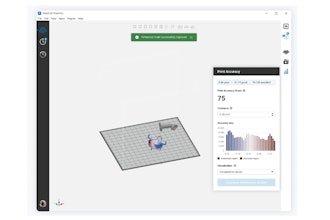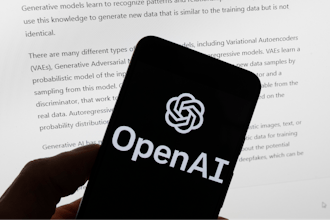It is no secret that we live in a global economy. The goods and services we enjoy come from all over the world: your car may have been designed in Germany, assembled in Mexico, and sold in the U.S.
From a manufacturing perspective, this has created enormous challenges, along with new IT systems to address them. For example, farm equipment manufacturer AGCO has implemented a solution from Apriso Corporation, a developer of enterprise software for manufacturing operations management, with good results.
Global Production, Global Visibility
As the third-largest farm equipment maker in the world for brands such as Allis Chalmers, Fendt, and Challenger, AGCO produces a wide range of industrial machinery products including tractors, combines, and sprayers, which are sold through a network of 2,600 independent dealers and distributors in more than 140 countries worldwide.
A globally distributed customer base such as AGCO’s requires manufacturers to make the same product in multiple locations, in turn requiring greater process consistency and standardization. At the same time, manufacturers face the challenge of trying to maintain and advance legacy IT infrastructures built on a patchwork of disparate, siloed industrial manufacturing systems that were implemented over the past decade or two.
A first step in addressing these challenges is to achieve global visibility across all operations. Once you can see what you are making and what processes are being executed, the next step is to standardize your IT infrastructure so as to better support collaboration across these operations on a global scale.
The concept is straightforward -- greater visibility and process standardization will drive improved performance, increase efficiency, and offer new ways to achieve continuous process improvement while maximizing asset utilization. But the execution is a bit more difficult. Managing production on a global scale becomes increasingly difficult when operations are distributed, processes are outsourced, and suppliers operate more autonomously. Not only do manufacturers rely on multiple plants using different execution and reporting systems, but there are often different countries and governing regulatory bodies to deal with as well.
Fortunately, a new breed of IT systems has greatly simplified this hurdle by offering a more extensible platform-based approach to add new visibility and capabilities while still retaining process consistency across operations. And one of the emerging leaders in implementation is AGCO Corporation, with products under the Allis Chalmers, Challenger, and Fendt brands.
Leading by Example
The level of activity that AGCO regularly achieves requires significant focus on production efficiency, manufacturing quality, and a dynamic, real-time knowledge of everything that’s happening along their supply chain. Most importantly, they need “eyes and ears” to operations activity so as to ensure seamless collaboration between each of their production and distribution sites and their supply network.
Like many manufacturing-intensive companies, AGCO had traditionally managed production locally, using multiple “point solutions” on the factory floor. For many years, this method served the company well. Individual plant managers kept production running smoothly while at the same time, production met customer demand.
As AGCO has expanded its product line, the company has grown in emerging markets including Russia, China, and Africa. This growth added new pressure to optimize production processes and expand visibility and control across their global operations. AGCO recognized the need to modernize its IT systems to lay the groundwork to ultimately achieve greater collaboration and to work more effectively with partners, suppliers, and customers around the world. This pressure prompted the search for an enterprise manufacturing system capable of supporting these requirements.
A New Approach
In response to today’s global transformation, manufacturing execution systems have evolved to better meet the new challenges of global production. To start, these software systems now have the capability to manage multiple sites, functioning as an enterprise operations platform for monitoring and controlling not only production processes but manufacturing resources, such as labor, materials, and equipment.
Notably, the value of these systems is greatly expanded when they can synchronize not only production processes, but also those associated with maintenance, warehouse, quality, and labor activities. This is where the manufacturing market is trending, and exactly where AGCO was focused in order to streamline their production and work more intelligently with global partners and suppliers.
Companies today typically source material from all over the world, which creates significant business benefits and cost efficiencies, but also introduces a layer of operational complexity and risk that needs to be addressed. For example, if there are any complicating issues with a supplier (e.g., material shortages from natural disasters, production delays, etc.), the manufacturer needs to respond in order to find a workable alternative to keep production moving in the right direction.
AGCO implemented Apriso’s “next generation” platform-based manufacturing operations solution to provide a broader view of global manufacturing operations and more efficiently manage operations while supporting growth into emerging markets. The author was part of the team that helped AGCO to select and implement its new solution to manage labor, material, and equipment, and the processes that use these resources to create products that meet their exact quality standards. So far, the results are excellent, with operations efficiency improved, idle inventory levels down, and output up.
Access to Operations Intelligence
One of the hidden benefits of implementing an enterprise “platform”-based approach is the wealth of data that now becomes readily available for even greater performance analysis. The ability to “de-compartmentalize” information that previously was “locked away” in functional silos has proven to be critical in reducing wasted time, energy, and material. This has been especially true between the interfaces of functional areas, such as engineering, planning, and manufacturing, while also fostering innovation.
The collective value of the entire manufacturing system grows as more processes are integrated and more data is shared. A “unified data model” approach is helpful to enterprise systems implementations as it can help to further accelerate visibility across functions and locations. Ready access to manufacturing information can deliver valuable intelligence quickly and effectively, helping to improve operational performance. As systems processing capabilities keep increasing, greater value continues to be possible, paying handsome rewards for many years to come, helping to further strengthen those industry leaders now investing in and implementing these types of information and process management solutions.
Please click here for a video interview with executives from AGCO, discussing how the company changed its manufacturing process to keep pace with global expansion.























